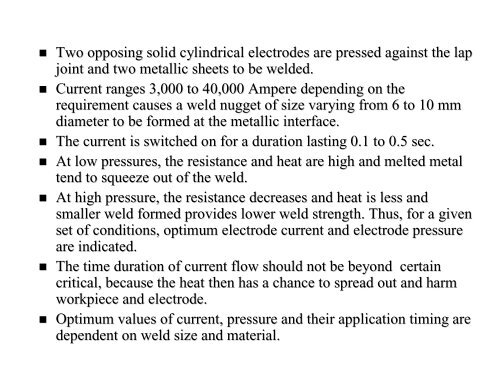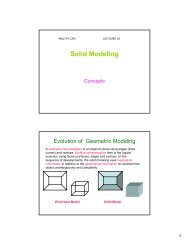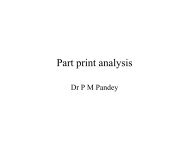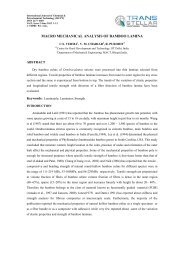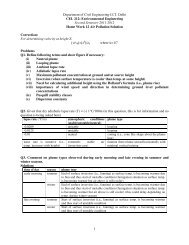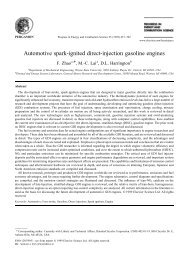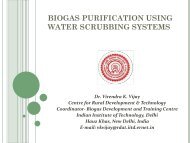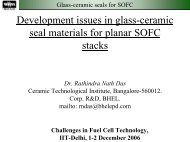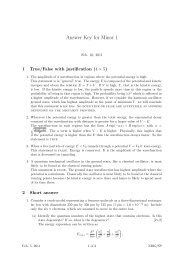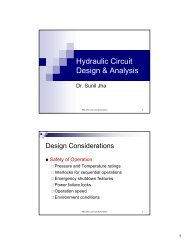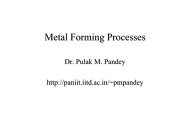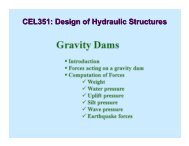You also want an ePaper? Increase the reach of your titles
YUMPU automatically turns print PDFs into web optimized ePapers that Google loves.
Two opposing solid cylindrical electrodes are pressed against the the<br />
lap<br />
joint <strong>and</strong> two metallic sheets to be welded.<br />
Current ranges 3,000 to 40,000 Ampere depending on the<br />
requirement causes a weld nugget of size varying from 6 to 10 mm<br />
diameter to be formed at the metallic interface.<br />
The current is switched on for a duration lasting 0.1 to 0.5 sec. sec<br />
At low pressures, the resistance <strong>and</strong> heat are high <strong>and</strong> melted metal metal<br />
tend to squeeze out of the weld.<br />
At high pressure, the resistance decreases <strong>and</strong> heat is less <strong>and</strong><br />
smaller weld formed provides lower weld strength. Thus, for a given given<br />
set of conditions, optimum electrode current <strong>and</strong> electrode pressure pressure<br />
are indicated.<br />
The time duration of current flow should not be beyond certain<br />
critical, because the heat then has a chance to spread out <strong>and</strong> harm harm<br />
workpiece <strong>and</strong> electrode.<br />
Optimum values of current, pressure <strong>and</strong> their application timing are<br />
dependent on weld size <strong>and</strong> material.


